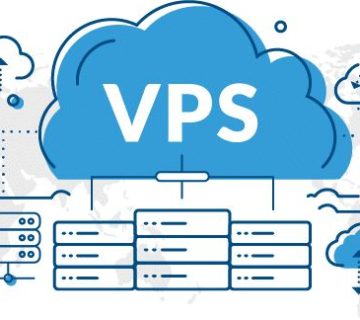Big data has impacted numerous sectors. It has changed the way organizations and institutions make decisions. We’ve written extensively on the impact of big data in other sectors such as education and healthcare. We’ve recently tackled the implications of big data in politics and government. Big data is playing an increasingly important role in analyzing voting behavior. By using big data techniques, we can better understand how people are voting and what factors are influencing their decisions. In this article, we will explore the history and development of big data in analyzing voting behavior and its current usage and importance. We will also look at some of the trends and prospects for big data in this field.
What is Big Data
Simply put, big data is an extensive collection of data that can be processed and analyzed to reveal patterns and insights. For example, in the case of voting behavior, big data concerns data that reveals the actions or inactions of citizens in respect of participating in the elections. These actions include deciding to vote or not to vote for a specific individual or political party—also the decision to participate or not to participate in an election.
Growth of Big Data
According to a study by Cisco Systems, global data volumes will grow tenfold by 2020, reaching 44 zettabytes (ZB). Several factors are driving this growth. They include the increasing use of big data analytics, the proliferation of connected devices, and the rise of the Internet of Things (IoT). The study also found that big data plays a crucial role in analyzing voting behavior. For example, in 2016, organizations used big data to analyze voting patterns in over 50% of US elections. Experts forecasted that it would rise to 70% by 2020.
Examples of Usage of Big Data in Analyzing Voting Behavior
United States Presidential elections
Many organizations and campaign teams have used big data to analyze voting behavior. For example, the Obama campaign team used big data to target potential voters and get out the vote. They were able to do this by mining social media data to identify supporters and then sending them personalized messages urging them to vote.
In the US presidential election of 2016, organizations and pollsters used big data to predict the outcomes of states and counties with a high degree of accuracy. This was made possible by the large volume of data available and the increasing sophistication of big data analytics tools.
Organizations also used big data to understand the factors that influenced voter behavior. For example, they used big data to identify which demographic groups were most likely to vote for Donald Trump or Hillary Clinton. This allowed for targeted campaigning to be more effective.
Other countries
Other countries have also used big data used to understand voting behavior. For example, organizations used big data to study the 2017 French presidential election. In this election, organizations used big data to identify the most important issues to voters and how they were likely to vote.
Importance of Big Data in Analyzing Voting Behavior
Accuracy
There are several reasons why big data is essential in analyzing voting behavior. Firstly, big data can help to identify trends in voting behavior. This is important because it allows organizations, governments, and institutions to adapt their campaigns and messaging to better appeal to voters. In addition, as we have seen, big data provides a much richer data source than traditional methods. This allows for a more detailed and accurate analysis.
Finally, big data techniques are becoming increasingly sophisticated. This means we can glean insights that would not be apparent using other methods. For example, one can use big data to identify patterns and correlations that would not be apparent from a small data set.
Transparency
Big data plays a vital role in increasing transparency and accountability in elections. For example, it has improved the litigation of electoral disputes. In addition, access to large sets of electoral data has increased the chances of fair rulings. For example, the opposition used big data to track election fraud in the Kenyan general election. This helped to ensure that the election was free and fair. Unfortunately, the Supreme Court nullified the presidential elections due to this, and the country had to conduct a repeat election.
Efficient use of campaign resources
Secondly, big data can help identify which voters are most likely to vote for a particular candidate. This is important because it allows campaigns to focus their resources on these voters and increase the chances of winning the election.
Exit polling for future decision-making
Thirdly, institutions can use big data to improve the accuracy of exit polling. Exit polling is the process of asking voters who have just voted which candidate they voted for. By using big data, pollsters can adjust their sampling methods to ensure that they accurately represent how people have voted. Again, this impacts future electoral decisions and government policy.
Trends and future of big data in voting behavior analysis
There are several trends and the future of big data in analyzing voting behavior.
Increase in the volume of data
The volume of data is increasing rapidly. The proliferation of connected devices and the rise of the Internet of Things is driving this increased volume. Furthermore, big data is becoming more sophisticated. This means that the data will provide a more detailed picture of how and why people made their voting choices.
Secondly, big data is becoming more accessible. This means that more organizations can use it to analyze voting behavior to make better electoral decisions.
Reduced costs
Big data is becoming more affordable. This is making it possible for more organizations to use it. For example, the cost of big data storage has fallen by 90% over the last decade. This means that more organizations can collect and store big data, allowing them to benefit from its advantages.
Campaign personalization
Fourthly, politicians will continue to use big data to target voters more personally. This means that campaigns can send targeted ads and messages to individual voters based on their preferences and behavior. However, there is a negative side to this issue. Cambridge Analytica personalized campaigns by creating hatred and division through personalized political messages. As a result, Facebook endured a lot of trouble from litigation issues. This issue created awareness and the need to regulate personalized political messages. Personalized campaigns will continue to be an issue of keen interest in future elections.
Big data is playing an increasingly important role in analyzing voting behavior. Politicians and institutions concerned with elections will continue to rely on it to understand their voters better. Hence, they will make better decisions.
At Softlink Options, we work with all organizations that require data security solutions. Check out our data backup and Web hosting packages. We take great pride in the quality of our products and services.
CONTACT US in case of any queries. We take pride in the quality of our products and services.



